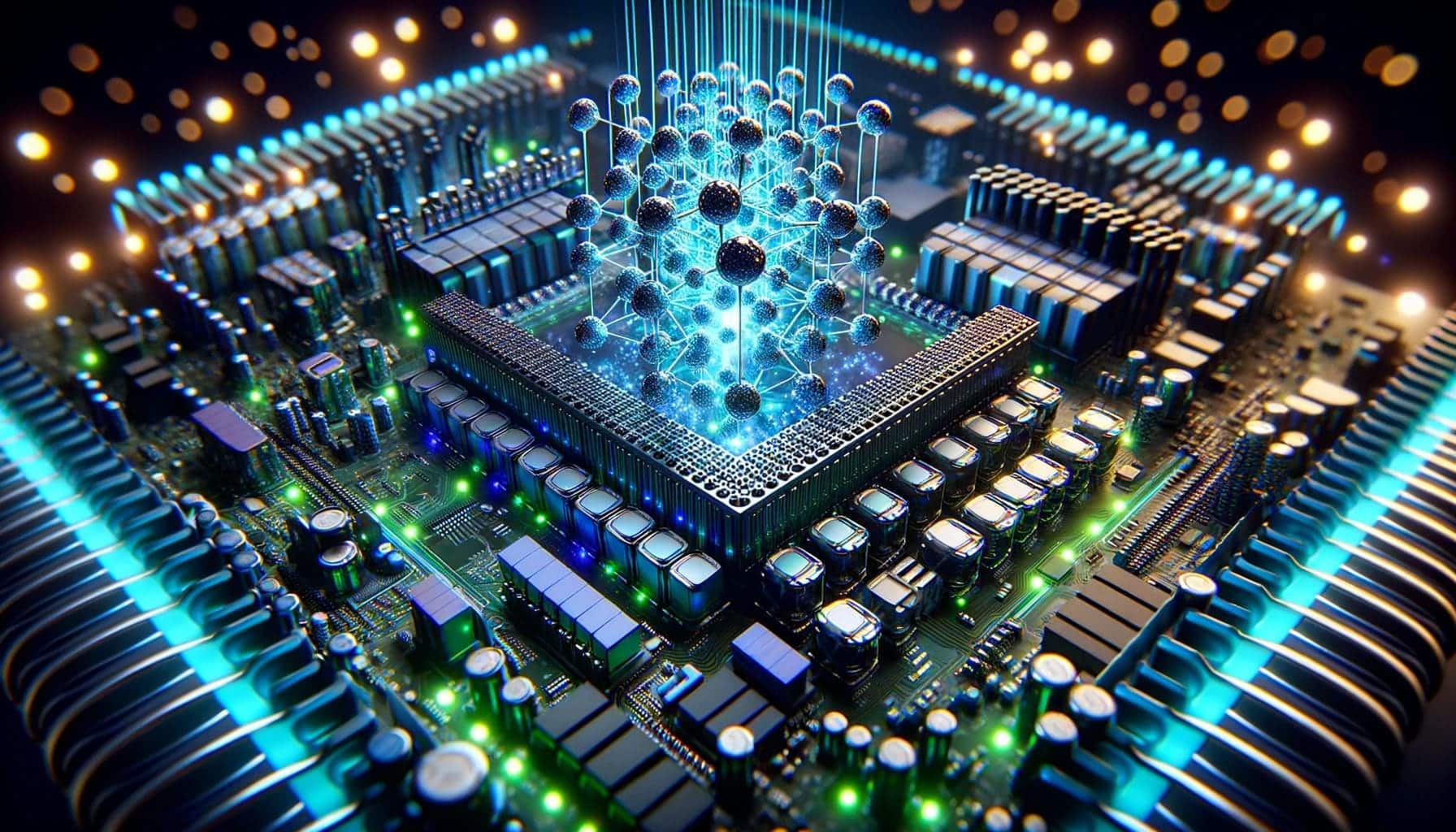NVIDIA has announced NVQLink, an open system architecture for coupling quantum processors (QPU) with GPU-accelerated supercomputing, aiming to propel a new generation of quantum-classical supercomputers. The initiative was developed in collaboration with nine U.S. scientific laboratories — including Brookhaven, Fermilab, Berkeley Lab, Los Alamos, MIT Lincoln Laboratory, Oak Ridge, PNNL, and Sandia — along with 22 industry partners comprising QPU and quantum control providers.
According to the company, NVQLink provides the high-speed, low-latency link that quantum systems require to execute in real-time control algorithms, calibration, and particularly quantum error correction. This is a key requirement for making quantum computing useful and scalable. The technology integrates with NVIDIA’s CUDA-Q platform, enabling developers to program hybrid applications that orchestrate CPU, GPU, and QPU as a single coherent system.
Why it matters: from labs to practical applications
Qubits are extremely fragile and susceptible to errors. Keeping them operational demands control loops that respond within micro- or milliseconds to signals of noise, drift, and unwanted interactions. This is where NVQLink comes in: by establishing a direct connection between the GPU-accelerated classical control and the QPU, it allows these control loops to run with enough bandwidth and latency to sustain error correction codes and system stabilization.
This hybrid (quantum + classical) approach is also the most realistic path to accelerate near-market applications such as computational chemistry, materials science, or quantum process modeling, where large-scale GPU simulations are combined with specific quantum routines.
A broad ecosystem: 17 QPU builders and 5 control providers
NVQLink is conceived as an open architecture that does not favor a single type of QPU. The initial ecosystem includes developers of superconducting, ionic, photonic, and neutral atom QPUs among others: Quantinuum, IonQ, Rigetti, Pasqal, QuEra, Oxford Quantum Circuits, Atom Computing, IQM, ORCA Computing, Alice & Bob, Quantum Motion, Quandela, Anyonn, SEEQC, Quantum Circuits, Inc., Infleqtion, and Silicon Quantum Computing.
On the control layer —where pulses are generated, qubits read, and experiments synchronized— companies like Keysight Technologies, Quantum Machines, Qblox, QubiC, and Zurich Instruments participate, integrating their systems with the back-end accelerated by NVQLink.
National laboratories: a roadmap for quantum-classical supercomputing
The DOE laboratories will utilize NVQLink as a foundation to advance error correction, calibration, and hybrid application development. The collaboration envisions a scenario where each scientific supercomputer with GPU can closely couple quantum modules —whether local or remote— and present them to users as a single resource.
The strategic goal is clear: prepare the infrastructure for a quantum-GPU era, where the AI capacity (training/inference on GPUs) and quantum computing mutually reinforce.
Programming: CUDA-Q and hybrid stacks
Researchers will access NVQLink via CUDA-Q, NVIDIA’s SDK for quantum-classical programming. This environment allows defining hybrid algorithms, sending kernels to GPU and QPU, and synchronizing their execution with task and data flow semantics. The goal is to minimize the friction between worlds that, until now, have operated with disparate tools and limited portability to real systems.
Implications for the industry
- True convergence: a standardized bridge between QPU and supercomputing opens the door to scalable pilots outside the lab.
- Technological agnosticism: supporting multiple quantum platforms (superconductors, ions, photons, neutral atoms…) prevents vendor lock-in and enables fair comparisons.
- Accelerating “quantum software”: having I/O, latency, and GPU control/correction capabilities speeds up deployment from experiments to repeatable workloads in chemistry and materials.
- Talent and capital attraction: aligning labs, startups, and big tech within a common architecture reduces adoption risks and promotes cross-learning.
Availability
Interested quantum hardware manufacturers and supercomputing centers can request access to NVQLink via the official program website. Integration with CUDA-Q is underway to facilitate researchers and developers in starting to build and test hybrid applications in real-world environments.
Frequently Asked Questions
What does NVQLink add compared to “software coupling” of QPU and GPU over conventional networks?
Guaranteed latency and bandwidth for control and error correction, along with a standardized architecture that simplifies the physical and logical integration of QPU and GPU back-ends.
Is it tied to a single type of qubit or quantum hardware?
No. NVQLink is open and agnostic, with 17 QPU manufacturers and 5 control providers in the initial ecosystem, covering multiple technologies (superconductors, ions, photons, neutral atoms…).
How is a hybrid application developed using NVQLink?
Through CUDA-Q, by defining quantum and classical components as coordinated tasks: the QPU executes the circuit; GPUs handle control, calibration, optimization, and post-processing, all within a single workflow.
What initial use cases will we see?
Computational chemistry and materials science (electronic properties, catalysis, structure optimization), alongside algorithms and error-correcting code testing.
Note: NVQLink connects QPU and GPU via a high-speed, low-latency interconnect, integrates with CUDA-Q, and is supported by nine U.S. national laboratories, 17 QPU manufacturers, and five quantum control providers to accelerate quantum-classical computing towards practical applications.

